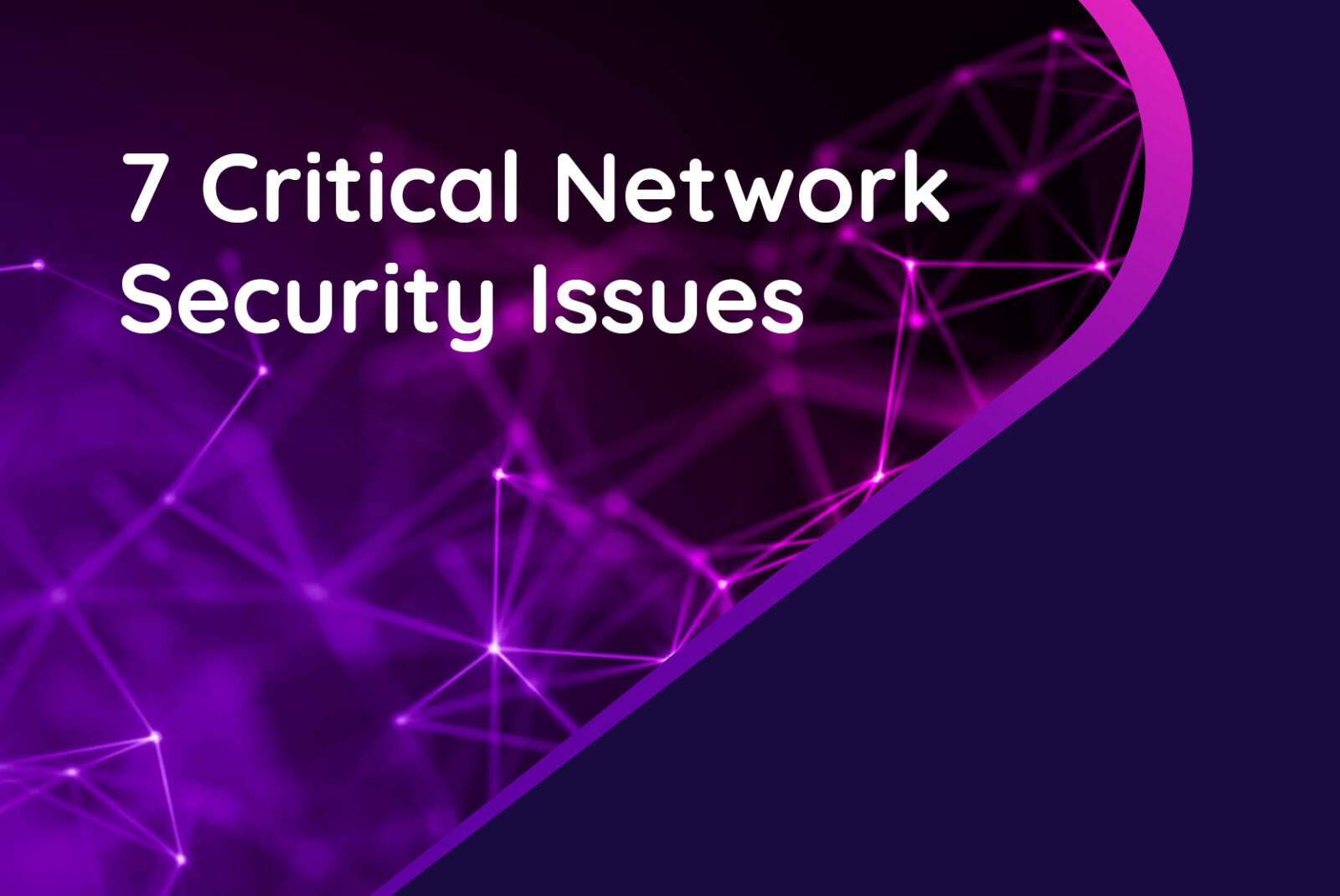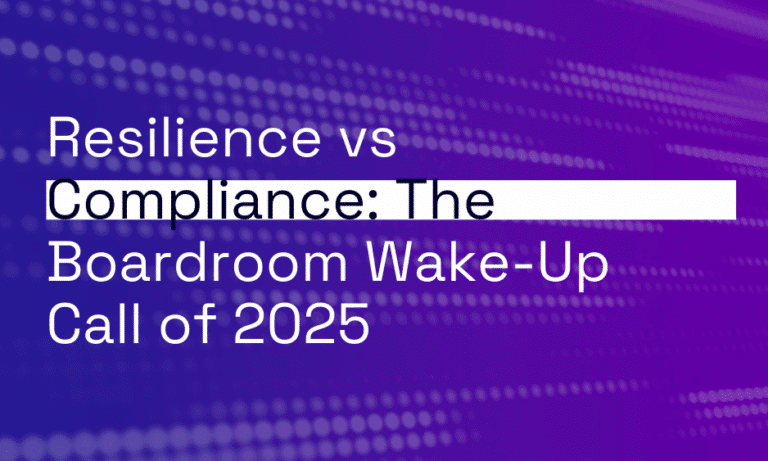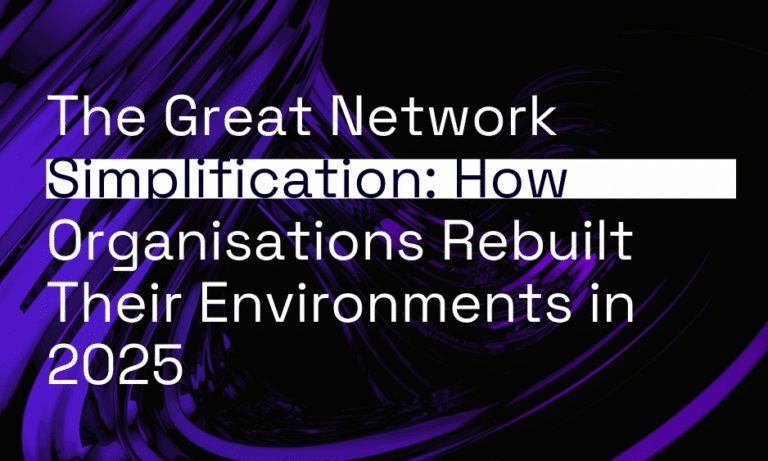Cyber security and data hacking has dominated news headlines and captivated our attention due to the risk posed to businesses and consumers around the globe. We hear a lot less about
network security, but the reality is hackers gain access to systems and data via the network.
A comprehensive network security design not only helps to prevent cyber attacks but also enables quick detection and response to any potential security incidents. Importantly, this helps to build trust with customers, partners and stakeholders by providing assurance that their valuable data is protected.
While there are many cyber security tools designed to protect every aspect of the network, if the network architecture is not designed to support robust security measures that can work holistically, the system ultimately becomes vulnerable.
Must-know network security issues
Given the critical importance of network security in keeping systems and data safe, here are 7 critical issues you need to know about and action in your organisation today.
1. Remote Access Vulnerabilities
As teams spend more time working away from the office, remote access vulnerabilities pose increasing risks to organisations. These vulnerabilities occur when remote access technologies, such as
virtual private networks (VPNs), remote desktop protocols (RDP), or cloud-based services are not properly secured. Cyber attackers can exploit weak passwords, unpatched software, misconfigurations and outdated encryption protocols to gain unauthorised access to the company network.
Remote access vulnerabilities are often increased by the actions of employees, including using unsecured public Wi-Fi networks or falling victim to phishing attacks. To mitigate these risks, organisations need to implement robust security measures such as strong authentication mechanisms, regular security updates, multi-factor authentication, network segmentation and user awareness training.
Addressing remote access vulnerabilities helps to ensure the integrity and confidentiality of data and maintains a secure remote work environment for employees.
2. Mobile Threats
Mobile threats pose a significant challenge in today’s connected world, where smartphones and tablets have become integral parts of our personal and professional lives. These threats encompass various malicious activities targeting mobile devices and the sensitive data stored within them.
Common mobile threats include mobile malware, phishing attacks, unsecured Wi-Fi networks and insecure mobile applications. These threats can lead to exposure of personal and sensitive information, unauthorised access and even financial losses.
Best practice for mitigating mobile threats involves regularly updating operating systems and applications, being cautious of suspicious links and apps, using secure Wi-Fi networks and adopting strong authentication methods.
3. Cloud Attacks
Cloud attacks target vulnerabilities in cloud infrastructure, applications, and user accounts to gain unauthorised access or manipulate sensitive information. Common types of cloud attacks include data breaches, denial-of-service (DoS) attacks, insider threats and account hijacking.
To reduce the risk of cloud attacks, organisations should implement strong access controls, regularly update and patch cloud systems, encrypt sensitive data, monitor and analyse cloud activity for suspicious behaviour, and provide comprehensive user training on
cloud security best practices. By incorporating cloud security into the secure network design and adopting a proactive and multi-layered approach to cloud security, businesses can build network resilience and protect valuable data from evolving cloud-based threats.
4. Unknown Network Assets
Unknown network assets are devices, systems or resources that are on a network but have not been identified or documented by the organisation. You can’t protect what you can’t see, so it’s critical that every device and asset on the network is visible. This includes unauthorised devices connected to the network, shadow IT resources or outdated systems.
These network assets pose a significant security risk as they create potential entry points for attackers to exploit, as without proper visibility and management, these assets may lack necessary security controls and be vulnerable to exploitation and compromise. Attackers can leverage these unknown assets to gain unauthorised access, conduct reconnaissance, launch attacks, or download sensitive information.
Secure network design includes implementing robust asset discovery and inventory processes, conducting regular network scans and audits, and enforcing strict access controls. It’s critical that network activity is monitored continuously to detect any unauthorised or unaccounted devices, so they can be quickly investigated. Proactively managing and securing unknown network assets means organisations can minimise their attack surface and enhance their overall network security.
5. User Account Privileges
User account privileges determine the level of access and control an individual has and plays a crucial role in maintaining the security and integrity of systems and data. Proper management of user account privileges is essential to prevent unauthorised access, data breaches and misuse of resources.
Implementing the principle of minimum privilege ensures that users are only granted privileges required to perform their specific roles and responsibilities. Regular reviews of user account privileges, including revoking unnecessary or outdated privileges, can help mitigate potential security risks. Additionally, organisations should enforce strong authentication mechanisms, such as multi-factor authentication, to ensure that user accounts are adequately protected.
By carefully managing user account privileges, organisations can maintain a balance between security and operational efficiency, reducing the risk of unauthorised access and safeguarding sensitive information.
6. Unpatched Vulnerabilities
Unpatched vulnerabilities pose a significant risk to the security of devices, software and networks. These vulnerabilities are security flaws or weaknesses within software or systems that have been discovered by researchers or hackers but have not yet been patched or updated.
Attackers actively exploit unpatched vulnerabilities to gain unauthorised access, execute malicious code or steal sensitive information. The consequences of unpatched vulnerabilities can be severe, leading to data breaches, system compromises, or even a complete network compromise.
IT teams need to prioritise timely patching and updating of software and systems to mitigate the risks associated with unpatched vulnerabilities, closing known security gaps, and protecting against emerging threats. A secure network design will also include vulnerability scanning tools and
monitoring security to help identify and remediate unpatched vulnerabilities quickly.
7. Inadequate IT Security Management
Having inadequate implementation of security policies, practices and controls to protect IT assets from potential threats is a risk faced by many organisations. When IT security management is lacking, organisations are more vulnerable to cyber attacks, data breaches and other security incidents.
If sensitive data is left unprotected, systems are poorly configured or vulnerabilities go unnoticed or unaddressed, the result can be devastating for an organisation. Financial losses, reputational damage, legal and regulatory compliance issues and disruption to business operations are just some of the negative outcomes of inadequate IT security management.
The right security policies, regular risk assessments, appropriate security controls and ongoing training and awareness programs for employees, creates resilience to cyber threats and helps protect valuable assets and information. Network security design plays a critical role in safeguarding a business network from potential cyber threats and protecting sensitive information. By implementing these 7 steps as part of secure network design, organisations can help maintain the confidentiality, integrity and availability of data, as well as ensure the smooth functioning of business operations.
Ultimately, network security design is a fundamental aspect of any cyber security strategy, helping to build resilience, reputation and long-term success in today’s increasingly interconnected digital landscape.
Orro builds networks that are secure by design. We proactively address potential risks throughout your network infrastructure to ensure data flow, data integrity, storage, access and privacy are all optimised.









